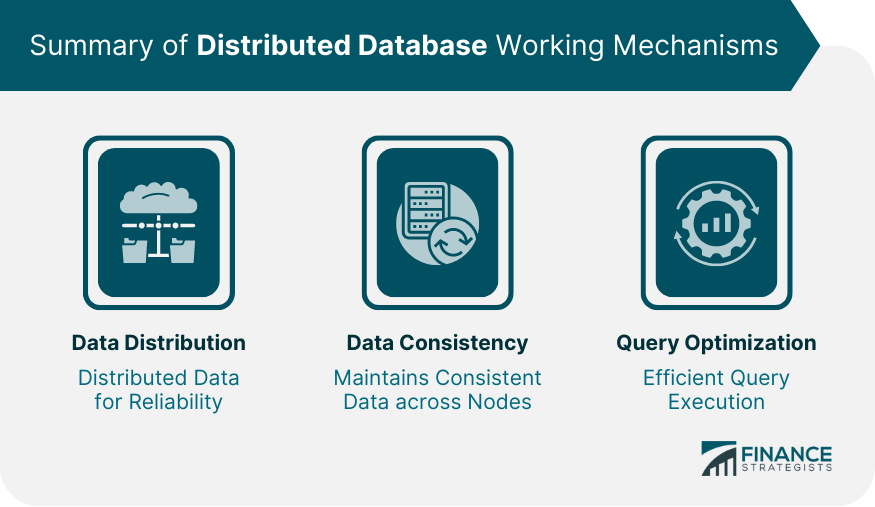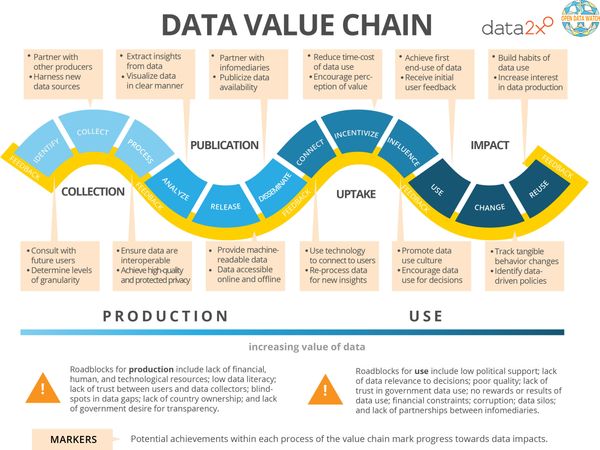Overview
Introduction to MySQL performance optimization
MySQL performance optimization is a crucial aspect of managing databases efficiently. It involves implementing various techniques and strategies to enhance the speed and efficiency of MySQL database operations. The day-to-day activities of a database administrator play a vital role in ensuring optimal performance. From monitoring query execution to identifying and resolving bottlenecks, a DBA’s expertise is essential in maintaining a high-performing MySQL environment. In this article, we will explore ten valuable tips for optimizing MySQL performance, providing insights and best practices to enhance the overall efficiency of your database system.
Importance of optimizing MySQL performance
Optimizing MySQL performance is crucial for efficient database management. By optimizing MySQL performance, businesses can ensure faster query execution, reduced response time, and improved overall system performance. It allows for efficient data retrieval, storage, and manipulation, enabling businesses to make informed decisions based on real-time data. Effective MySQL performance optimization also helps in minimizing downtime and maximizing the availability of critical data. Therefore, investing time and resources in optimizing MySQL performance is essential for effective database management.
Common performance issues in MySQL
MySQL is a powerful and widely used relational database management system. However, like any other software, it can encounter performance issues. Understanding and addressing these common performance issues is crucial for optimizing MySQL performance. One of the most common performance issues in MySQL is slow query execution. This can be caused by inefficient queries, lack of proper indexing, or inadequate hardware resources. Another common issue is high CPU usage, which can be caused by heavy query loads or inefficient query plans. Additionally, insufficient memory allocation, disk I/O bottlenecks, and improper configuration settings can also impact MySQL performance. By addressing these common performance issues, developers and administrators can significantly improve the speed and efficiency of their MySQL databases.
Tip 1: Use Indexes
Understanding indexes in MySQL
Understanding indexes in MySQL is crucial for optimizing performance. Indexes are data structures that improve the speed of data retrieval operations on database tables. They allow the database server to quickly find the rows that match a certain condition. By creating indexes on the appropriate columns, you can significantly reduce the time it takes to execute queries. However, it’s important to understand how indexes work and when to use them effectively. This article will provide you with 10 tips for optimizing MySQL performance, including best practices for creating and using indexes.
Choosing the right columns for indexing
Choosing the right columns for indexing is crucial for optimizing MySQL performance. Indexing allows the database to quickly locate and retrieve data, improving query performance. When choosing columns for indexing, it is important to consider the columns that are frequently used in WHERE clauses or JOIN conditions. These columns should be indexed to speed up data retrieval. Additionally, columns with high cardinality, meaning they have a large number of distinct values, are good candidates for indexing. This is because indexing on such columns can significantly reduce the number of rows that need to be scanned. By carefully selecting the right columns for indexing, you can greatly enhance the performance of your MySQL database.
Avoiding over-indexing
Avoiding over-indexing is crucial for optimizing MySQL performance. Over-indexing can lead to slower query execution times and increased disk space usage. It is important to carefully analyze and plan the indexes for your MySQL database to ensure optimal performance. When comparing MariaDB vs PostgreSQL, it is important to consider their respective indexing strategies and how they handle over-indexing. MariaDB offers various indexing options such as B-trees and hash indexes, while PostgreSQL utilizes B-trees and bitmap indexes. Understanding the differences between these two database management systems can help you make informed decisions when it comes to avoiding over-indexing and optimizing MySQL performance.
Tip 2: Optimize Queries

Identifying slow queries
Identifying slow queries is a crucial step in optimizing MySQL performance. Slow queries can significantly impact the overall performance of your database and can lead to delays in data retrieval and processing. By identifying these slow queries, you can take the necessary steps to optimize them and improve the overall efficiency of your MySQL database. This can involve analyzing query execution plans, using profiling tools, and monitoring query performance metrics. Additionally, it is important to consider indexing strategies and table optimizations to further enhance query performance. By addressing slow queries, you can ensure that your MySQL database operates at its peak performance and delivers fast and efficient results.
Using EXPLAIN to analyze query execution
Using EXPLAIN to analyze query execution is a crucial step in optimizing MySQL performance. EXPLAIN is a powerful tool that provides insight into how MySQL executes queries, allowing developers to identify and resolve performance bottlenecks. By running EXPLAIN on a query, developers can see the execution plan, which includes important information such as the order in which tables are accessed, the join type used, and the indexes utilized. This information is invaluable for identifying inefficient queries and optimizing them for better performance. When comparing MySQL and MariaDB, it is important to note that both are popular relational database management systems, but there is no clear winner. Each has its own strengths and weaknesses, and the choice between them depends on specific requirements and preferences. However, it is worth considering the performance differences between the two systems when making a decision. MySQL and MariaDB have similar syntax and features, but there may be slight variations in performance due to differences in optimization techniques and internal algorithms. Therefore, it is recommended to thoroughly test both systems and consider factors such as scalability, compatibility, and community support before making a choice.
Rewriting queries for better performance
Rewriting queries for better performance is one of the key strategies for optimizing MySQL performance. By rewriting queries, developers can improve the efficiency of their database queries and reduce the execution time. One important aspect of query rewriting is the use of indexing strategies. Indexing strategies involve creating indexes on the appropriate columns of database tables, which allows for faster data retrieval and query execution. By implementing effective indexing strategies, developers can significantly enhance the performance of their MySQL databases. When it comes to indexing strategies, there are various techniques and best practices that can be employed, such as choosing the right columns to index, avoiding over-indexing, and considering the cardinality of the indexed columns. By following these strategies, developers can ensure that their queries are optimized for maximum performance.
Tip 3: Configure MySQL Server

Adjusting key server parameters
Adjusting key server parameters is crucial for optimizing MySQL performance. By fine-tuning these parameters, you can significantly improve the overall efficiency and speed of your MySQL database. One important parameter to consider is the innodb_buffer_pool_size, which determines the amount of memory allocated for caching data and indexes. Increasing this value can enhance the performance of read-intensive workloads. Another parameter to pay attention to is the query_cache_size, which controls the caching of query results. Setting an appropriate value for this parameter can reduce the execution time of frequently executed queries. Additionally, adjusting the max_connections parameter can help optimize the usage of server resources by limiting the number of simultaneous connections allowed. By carefully adjusting these key server parameters, you can unlock the full potential of your MySQL database and ensure optimal performance.
Optimizing memory usage
When it comes to optimizing memory usage in MySQL, there are several key factors to consider. One of the most important aspects is reducing the amount of time spent waiting. Waiting can occur when there are bottlenecks in memory allocation or when there is excessive disk I/O. By identifying and resolving these issues, you can significantly improve the performance of your MySQL database. Additionally, it is essential to properly configure the memory-related settings in MySQL, such as the innodb_buffer_pool_size and key_buffer_size parameters. These settings determine the amount of memory allocated for caching data and indexes, respectively. By optimizing these settings based on your specific workload and available memory, you can ensure efficient memory usage and minimize the need for disk I/O. Overall, optimizing memory usage is crucial for maximizing the performance and responsiveness of your MySQL database.
Configuring storage engines
When it comes to optimizing MySQL performance, one crucial aspect to consider is configuring the storage engines. The choice of storage engine can greatly impact the overall performance of your MySQL database. There are several storage engines available in MySQL, including InnoDB, MyISAM, and Memory. Each storage engine has its own strengths and weaknesses, so it is important to choose the right one based on your specific requirements. InnoDB, for example, is known for its ACID-compliant transactions and support for foreign keys, making it a good choice for applications that require data integrity and reliability. MyISAM, on the other hand, is known for its simplicity and speed, making it suitable for read-heavy workloads. Memory, as the name suggests, stores data in memory, which can provide extremely fast access times but is limited by the available memory. By carefully configuring the storage engines in your MySQL database, you can optimize performance and ensure that your application runs smoothly.
Tip 4: Use Caching

Implementing query caching
Query caching is a crucial aspect of optimizing MySQL performance. By implementing query caching, you can significantly reduce the load on your database server and improve response times for frequently executed queries. Query caching works by storing the results of queries in memory, allowing subsequent identical queries to be served from the cache instead of executing them again. This can greatly improve the overall performance of your application, especially in scenarios where the same queries are executed repeatedly. To enable query caching, you need to configure the appropriate settings in your MySQL server. By doing so, you can take advantage of this powerful optimization technique and enhance the speed and efficiency of your database operations.
Using Memcached or Redis for caching
Using Memcached or Redis for caching is a crucial step in optimizing MySQL performance. By implementing a caching mechanism, such as Memcached or Redis, you can significantly improve the speed and efficiency of your database queries. These caching systems store frequently accessed data in memory, allowing for faster retrieval and reducing the load on the MySQL server. When it comes to mastering MySQL query execution plan, leveraging the power of Memcached or Redis can make a significant difference. By caching frequently executed queries or query results, you can minimize the need for repetitive query processing and improve overall performance.
Tip 5: Optimize Table Structure

Choosing the right data types
When optimizing MySQL performance, one crucial aspect to consider is choosing the right data types. The data types you choose for your MySQL tables can have a significant impact on the performance of your database. By selecting the appropriate data types, you can ensure efficient storage and retrieval of data, as well as optimize query execution time. It is important to carefully analyze the requirements of your application and the nature of the data you will be storing to make informed decisions about the data types. Additionally, keep in mind that choosing the right data types can also help minimize storage space and improve overall database performance.
Normalizing database tables
When it comes to normalizing database tables, there are several key considerations to keep in mind. First and foremost, it is important to understand the concept of normalization and its benefits. Normalization is the process of organizing data in a database to eliminate redundancy and improve data integrity. By breaking down data into smaller, more manageable tables, normalization helps reduce data duplication and ensures that each piece of information is stored in only one place. This leads to a more efficient and reliable database system.
Another important aspect of normalizing database tables is the use of SQL Server Extended Events. Extended Events is a powerful monitoring and troubleshooting feature in SQL Server that allows users to capture and analyze events in real-time. By leveraging Extended Events, database administrators can track and diagnose performance issues, identify bottlenecks, and optimize the overall performance of their MySQL databases.
In conclusion, normalizing database tables is crucial for optimizing MySQL performance. By understanding the principles of normalization and utilizing tools like SQL Server Extended Events, database administrators can ensure a more efficient and reliable database system.
Partitioning large tables
Partitioning large tables is a crucial technique for optimizing MySQL performance. By dividing a table into smaller, more manageable partitions, queries can be executed more efficiently. This is especially important for large tables that contain millions or even billions of rows. Partitioning allows for faster data retrieval and improved query performance. Additionally, partitioning can also enhance data management and maintenance tasks, such as backups and index rebuilds. If you are looking to optimize your MySQL database performance, consider implementing partitioning for your large tables.
Conclusion

Summary of key tips for optimizing MySQL performance
The performance of MySQL databases is crucial for the efficient operation of many applications. To optimize MySQL performance, there are several key tips that can be followed. These tips include using indexing effectively, optimizing queries, caching data, tuning the server configuration, and using appropriate tools. By implementing these tips, developers and administrators can ensure that their MySQL databases perform at their best. In order to achieve optimal performance, it is important to regularly monitor and analyze the database performance using tools such as MySQL Workbench, Percona Toolkit, and pt-query-digest. These tools provide valuable insights into the performance bottlenecks and help in identifying areas for improvement. By following the above tips and utilizing the right tools, organizations can enhance the performance of their MySQL databases and provide a better user experience for their applications.
Importance of continuous monitoring and optimization
Continuous monitoring and optimization are crucial for maximizing the performance of MySQL databases. In today’s data-driven world, where large amounts of data are constantly being generated, it is essential to ensure that the database is running efficiently. One of the key challenges in managing MySQL performance is data compression. With the increasing volume of data being stored and processed, data compression techniques play a vital role in minimizing storage requirements and improving query performance. In 2019, data compression challenges have become even more prominent as organizations strive to handle massive amounts of data. Therefore, it is imperative to stay updated with the latest advancements and best practices in data compression to optimize MySQL performance.
Final thoughts on improving MySQL performance
In conclusion, implementing effective database optimization techniques is crucial for improving MySQL performance. By following the 10 tips mentioned in this article, you can significantly enhance the speed and efficiency of your MySQL database. These tips include optimizing queries, indexing properly, caching data, and using appropriate storage engines. Additionally, regularly monitoring and analyzing your database’s performance can help identify areas for further optimization. By taking these steps, you can ensure that your MySQL database operates at its highest potential, resulting in better overall performance and user experience.







